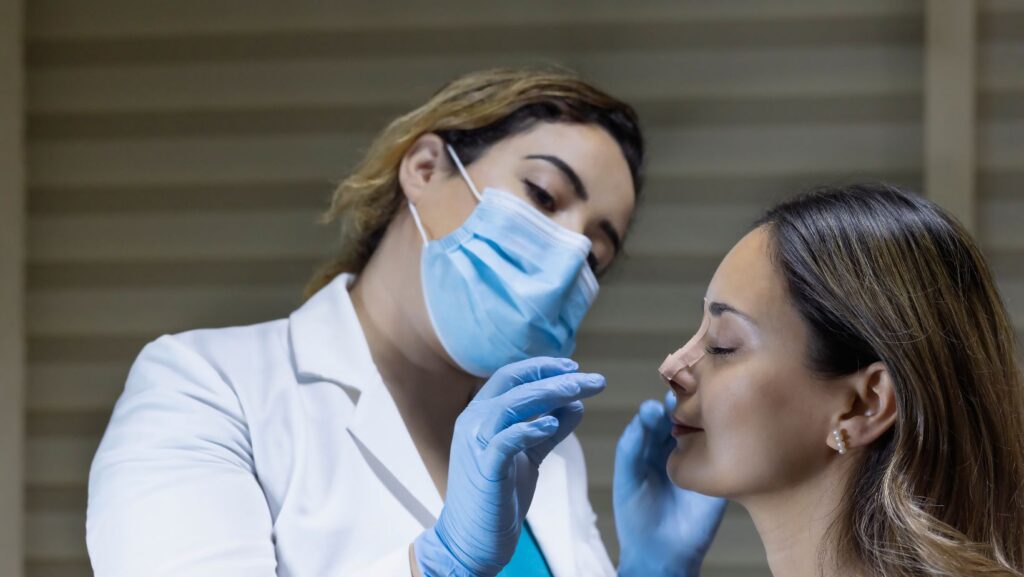
Rhinoplasty, commonly referred to as a “nose job,” is a popular cosmetic surgery procedure aimed at enhancing facial harmony and proportions. While the prospect of achieving your desired nose shape can be exciting, it’s crucial to focus on the recovery process for the best outcomes. Whether you’re considering rhinoplasty in Boston or elsewhere, here are essential tips to ensure a smooth recovery.
Understand the Recovery Timeline
Recovery from rhinoplasty varies among individuals, but understanding the general timeline can help set realistic expectations. The first-week post-surgery is often marked by swelling and bruising, with the majority of patients feeling comfortable being seen in public within 10-14 days. However, subtle swelling may persist for several months, with the final result typically evident after a year.
Follow Your Surgeon’s Instructions
Your surgeon will provide specific instructions tailored to your procedure. Adhering to these guidelines is paramount for a successful recovery. This may include:
- Keeping your head elevated: Especially during the first few days post-surgery, sleeping with your head elevated can significantly reduce swelling.
- Avoid strenuous activities: To prevent increased blood flow to the face, which can aggravate swelling and bleeding, it’s advisable to avoid heavy lifting and rigorous exercises for at least a few weeks.
- Attending follow-up appointments: These appointments allow your surgeon to monitor your healing progress and address any concerns that may arise.
Manage Swelling and Bruising
Swelling and bruising are normal aspects of rhinoplasty recovery. Here are ways to manage them effectively:
- Apply cold compresses: Use cold compresses around your eyes to reduce swelling and bruising. Avoid applying pressure directly to your nose.
- Use arnica: Some patients find topical arnica or oral arnica supplements helpful in reducing bruising.
Practice Good Nasal Care
Nasal care is a critical component of the recovery process. Keep your nasal passages clean and moist as instructed by your surgeon.

Saline sprays and gentle cleaning around the surgery area can prevent crust formation and maintain hygiene.
Address Pain Management
Pain and discomfort can be managed with medication prescribed by your surgeon. Always consult with your surgeon before taking any pain medication, as certain over-the-counter products can increase bleeding risk.
Stay Patient and Positive
Recovery from rhinoplasty is a gradual process. It’s crucial to stay patient and maintain a positive outlook. The initial weeks may be challenging, but focusing on the ultimate goal of your surgery can be motivating. Remember, minor fluctuations in swelling are normal and will subside over time.
Choose the Right Surgeon
The success of your rhinoplasty and the ease of recovery largely depends on the skill and experience of your surgeon. If you’re considering rhinoplasty in Boston, ensure you choose a board-certified plastic surgeon with a track record of successful outcomes and satisfied patients.
Stay Healthy During Recovery
In addition to following your surgeon’s instructions, it’s essential to maintain a healthy lifestyle during your recovery period. This includes:
- Eating a balanced diet: Proper nutrition supports the healing process and can help reduce swelling.
- Avoiding smoking: Smoking can impair the healing process and increase the risk of complications.
- Getting adequate rest: Allow your body time to heal by getting plenty of rest and avoiding strenuous activities.
Protect Your Nose from Injury
During the initial stages of recovery, it’s important to protect your nose from any accidental bumps or injuries.

Your nose will be more susceptible to damage during this time, so be cautious and avoid activities that may put you at risk.
Manage Your Expectations
While rhinoplasty can produce dramatic results, it’s important to have realistic expectations about the outcome. Your final results may take time to fully manifest, and there may be minor imperfections that remain. Discuss your expectations with your surgeon beforehand to ensure you have a clear understanding of what to expect.
Conclusion
The journey of rhinoplasty extends beyond the surgical procedure itself. It encompasses a period of recovery that requires diligence, patience, and adherence to your surgeon’s instructions. By understanding the recovery timeline, managing swelling and bruising, practicing good nasal care, addressing pain management, and choosing the right surgeon, you can optimize your healing process and achieve the best possible results.
Additionally, staying healthy, protecting your nose from injury, and managing your expectations play crucial roles in ensuring a successful rhinoplasty outcome. Remember, rhinoplasty is not just about enhancing your appearance; it’s about enhancing your confidence and well-being.












